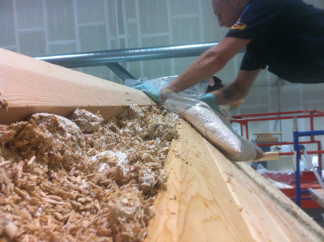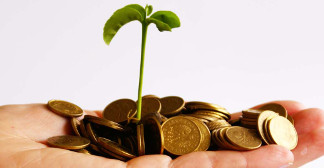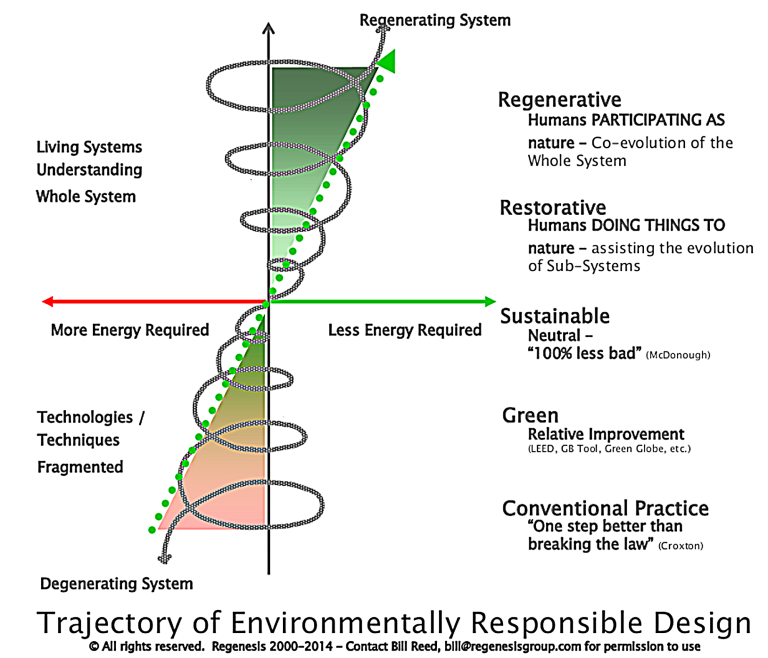Pilkington Glass – the benefits of strategic sustainability
On 30th August, I listened to Malcolm Deery of Pilkington Glass speak at a breakfast on “The Economics of Climate Change” at the Shire of Yarra Ranges.
Malcolm told an amazing story about the positive, strategic approach to sustainability taken by Pilkington, and how it had benefited the business:
- major savings in energy and water costs
- the smart products that are securing their business against “commodity” products from China and elsewhere
- the innovative post-processing that turned waste glass into a saleable product (roadbase)
Malcolm also discussed the reputation benefits of being a responsible corporate citizen, up to and including a ground-breaking Sustainability Covenant with the Victorian EPA which has been co-signed by Sustainability Victoria and the Australian Industry Group.
We heard that Pilkington has taken a two-step approach to work toward business sustainability, being:
- Below the line – good environmental management, that is, issues internal to the
business - Above the line – the value of products to consumers, leveraging societal value issues external to the business
Below the line is the internal process of doing business and implementing good environmental management. Really stepping up to “The Goal of Zero” – zero waste, zero defects, zero injuries.
Above the line is looking beyond products as “commodities” – understanding the value they give to their end user, and what extra values could be delivered. This isn’t only an altruistic process – it’s primarily about understanding business threats and opportunities.
In the glass industry, Pilkington dealt with the threat of “commodity” imports of 3mm glass by creating innovative “smart glass” products to enable the building industry to understand that they could save energy through their use in buildings, long before it became the global necessity it is now.
Smart Glass™ helps to communicate that ‘not all glass is the same’ and bundle together attractive benefits for their customers, such as lowering energy costs for building operators and in turn reducing greenhouse gas emissions.
In strategic terms, this is making the business a much more sustainable one and better able to compete on its own terms, one’s which customers assign a value to, rather than those which are dictated in a purely product commodity situation.
This provided the foundation for a $130 million investment to upgrade Pilkington’s major manufacturing site at Deadening in Victoria. Included in the rebuild will be first CVD glass
coating plant of its type in the Southern hemisphere and one of only five worldwide in
the Pilkington Group to produce high tech energy efficient low emissivity glass.
And they did it through being genuine players and building alliances, resulting in the first manufacturing Sustainability Covenant with the Victorian EPA and uniquely for any Covenant it is co-signed by Sustainability Victoria and the Australian Industry
Group.
In the midst of a buyout
Almost in passing, Malcolm also told us that all this happened in what is an enormously de-stabilising time for a business. What’s truly amazing about the Pilkington story is that while all these results were being achieved, the business was up for sale.
Multiple buyers were coming and going, and the innovations went on. So something powerful was going on behind the scenes – something (or someone/s) that persisted with the innovation process while being looked over and evaluated by several different potential buyers.
Despite politics and uncertainty, they kept going – and that’s REALLY amazing.
The story behind the story
To get real environmental performance breakthroughs in business, we need to understand HOW this happens. We get the story of WHAT happened – Pilkington, InterfaceFLOR, Ford Motors and DuPont. What we need to understand is how to replicate it – who and or what drove the business to continue its chose course despite the challenges of its environment?
I rang Malcolm to find out the story behind the story. What was it that was different? Here’s some of what we covered.
Existing traction
Before the buyout process started, the program already had some traction. The top level of the business had bought into the strong business case. They were convinced that “this is sound business” – that it was important to the business.
The success of the covenant and the ‘above and below the line’ activities is that it provides a common platform and language for varied disciplines within the business and those outside of it, including regulators to work together.
It provided a shared sense of purpose, cohesiveness and achievement, rather than the traditional barriers that often exist in a manufacturing business between technicians and marketing. It brought together a lot of good work that had been occurring across the business in different disciplines – into a better coordinated and more energized
framework.
EHS has a seat at the top
Unlike many businesses, Environment, Health and Safety is on the lead team. It has a seat at the top table and reports to the CEO.
Pilkington believes the highest quality on time delivered glass can be made without injury. The organization has a value for its people and sees an injury as an indicator that there is something not right with our processes. Therefore, safety is a business issue and is managed accordingly.
EHS at Pilkington also has a business focus. The EHS Manager’s core background and
training is in Operations and Management, not just Environment or Safety. He had the skill to mount a business case for the benefits of “being green”.
Senior management were convinced that “This will profoundly add value”. The case was
argued in business terms, around the threat of the emerging commodity market for glass and the benefits that in fact already existed around our energy efficient products.
The critical skills
So what was in place was the skills to get people to suspend disbelief and start thinking
about possibilities “What if zero injuries, zero waste, zero impact is possible? How can we
achieve these goals?”
What was also present was the ability to engage people around the value of the proposal – to capture their emotions and connect them to their values – to get their hearts as well as their heads.
Communication is a big and ongoing part of this. Communicating the value to the business and the people in the business, connecting outside the business and forming alliances. Turning the whole process into a point of attraction for buyers – something that made the business more saleable.
And finally, the absolute skill? Persistence. Persisting and persisting and persisting. The result?
Competitive advantage THROUGH sustainability.




